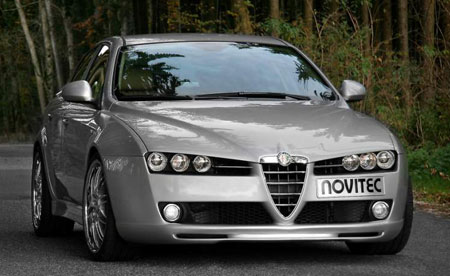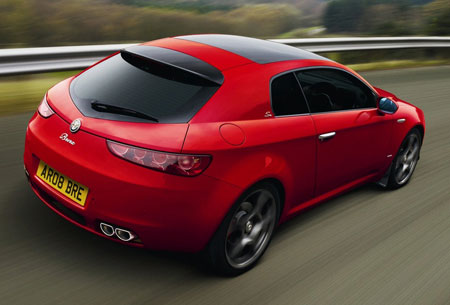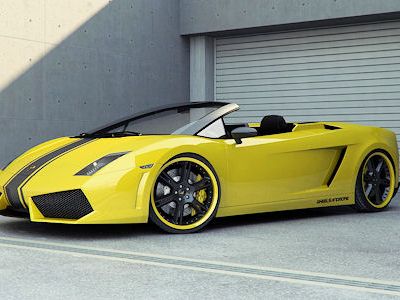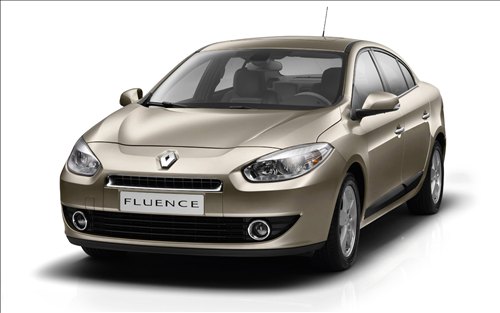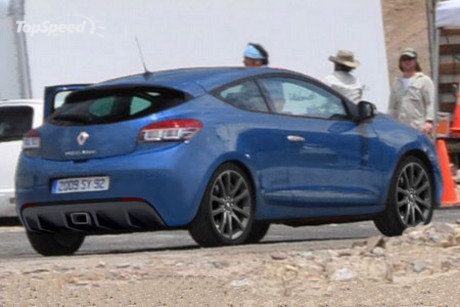Ford Focus 1.6 Flex
 A Ford apresentou a nova geração do Focus. Ele vem com o novo motor Sigma 1.6 Flex, quase todo feito em alumínio de quatro cilindros e 16 válvulas gerando 109 cv a gasolina e 115 cv abastecido com álcool.
A Ford apresentou a nova geração do Focus. Ele vem com o novo motor Sigma 1.6 Flex, quase todo feito em alumínio de quatro cilindros e 16 válvulas gerando 109 cv a gasolina e 115 cv abastecido com álcool.A versão GL vem de série airbag ar-condicionado, frontal duplo, travas, direção hidráulica, vidros e retrovisores elétricos, CD Player compatível com MP3, ajuste de altura dos faróis e rodas de aro 16”. Na versão GLX traz ainda vidros elétricos nas portas traseiras, maçanetas e retrovisores na cor do veículo e descansa-braço para o motorista.
Veja preços das novas versões 1.6 Flex do Focus 2010:
GL 1.6 Flex – R$49.900
GLX 1.6 Flex sem ABS – R$51.400
GLX 1.6 Flex com ABS – R$52.400
Opel Insignia OPC Sports Tourer
| - Top power: High performance station wagon must complete 10,000 km on Nürburgring - Top package: 325 hp, 435 Nm, Adaptive 4x4 and 1530 liters load capacity - Top points: Insignia OPC sedan testing passed with flying colors Rüsselsheim/Nürburgring. The Insignia OPC Sports Tourer will hit dealerships later this year, but first it has to go through hell – the Green Hell of the Nürgurgring's Nordschleife, considered the toughest, most demanding and dangerous race track in the world. Opel engineers insist that all vehicles in their OPC range complete a rigorous 10,000 kilometer testing around the 20.8 km Nordschleife of the Nürburgring, dubbed the Green Hell by legendary race car driver Jackie Stewart. Just a few days ago, the Insignia OPC sedan finished the challenge with no problems. “The Insignia OPC sedan raced 487 laps for 12 days at some top speeds flawlessly. This kind of performance and quality is what we expect from all our Opel cars,” says Hans Demant, Managing Director of Opel. The Opel Insignia OPC Sports Tourer boasts a 325 hp/239 kW, 435 Nm 2.8-liter V6 Turbo engine for maximum power. It features high-tech elements, like a lower, reworked mechatronic chassis with FlexRide, an Adaptive 4x4 transmission with an electronic rear limited slip differential (eLSD) and purpose-built Brembo brakes – all complemented by spacious station wagon functionality with 1530 liters of load capacity. Automotive technology at its best Like the Insignia OPC sedan, the Sports Tourer is full of technological highlights. The OPC engine is 25 percent more powerful than the 260 hp version of the 2.8 V6 Turbo in the Insignia Sport and Cosmo. The increase in power was obtained by reworking the exhaust, significantly reducing the counter pressure, with special mufflers contributing to a sporty, deep sound. The unit comes with a six-speed manual transmission, enabling acceleration from zero to 100 in 6.3 seconds and a top speed of 250 km/h (restricted). The management unit of the Adaptive 4x4 with eLSD has been recalibrated to adapt torque distribution to the sporty philosophy of the OPC. Engineers at the Opel Performance Center developed a specific high-performance front axle called HiPerStrut (High Performance Strut) for the chassis, which is 10 mm lower than the AWD Insignia Sport version. Benefits include reduced steering disturbances and an improved handling feel for the driver. The OPC's standard electronic FlexRide suspension has been adjusted for extra performance and caters to those enjoying a sportier ride. It offers three different sporty choices: The standard mode provides its most comfortable ride, a Sport mode is stiffer and a new OPC setting brings optimal fun. Tough Track: 12 days, 27,000 gear shifts, 35,551 curves and 487 laps Before it hits the roads in the fall, the new Opel Insignia OPC Sports Tourer will take its turn against the Green Hell: 10,000 fast kilometers on the Nordschleife translates to around 180,000 kilometers on the road. Modified tuning accommodates the station wagon's shifted center of gravity, which is why the Sports Tourer suspension will be tested separately on the Ring. Even though the 20.8 kilometer, extremely demanding track is part of the standard OPC program, this extra validation is always something special for Volker Strycek and his team. The ex-German Car Championship driver and Manager of the Opel Performance Center sums up: Twelve drivers, Opel design engineers and Nordschleife connoisseurs trade off behind the wheel of a production Insignia OPC for 12 days, rain or shine. “It really can take a toll on a those 12 days add up to 27,000 gear shifts along 35,551 curves during a total of 487 laps.” Validation Coordinator Jens Hornischer, who drives a major part of the endurance test distance, says, “We push the car to give a constant 90 percent or so – and that is really a tough test for any car. And there is next to no preparation work.” An Arden Blue Insignia OPC sedan completed its rite of passage earlier in May, confirming the high quality standard that Opel customers expect. Opel's long tradition of sport station wagons offers best of both worlds The Insignia OPC Sports Tourer is the latest chapter in a long station wagon success story. As a pioneer in this segment, Opel brought the Olympia Rekord Car-A-van, a combination of car and van, to Europe in 1953. In 1970 Opel built the Ascona Voyage, the first lifestyle station wagon. The next innovation in this segment followed in 1991, when Opel presented the most powerful production station wagon in the world, the Omega Caravan 24V, a 3-liter, straight-six cylinder with 204 hp. The Vectra OPC continued the Opel tradition of powerful station wagons. It was available from 2005, ultimately as a high-performance front-wheel drive model with 280 hp. The new 325 hp Opel Insignia OPC takes a huge step forward in terms of driving dynamics with even more power and the Adaptive 4x4 system. And the dynamic Sports Tourer version is also bound to turn heads. OPC: At home on the Nordschleife Opel testing on Nürburgring's Nordschleife has a long tradition dating back to the 1960s and sealed when the German brand signed a partner contract with the legendary race track in 2006. It was then that the Rüsselsheim automaker opened its own test center directly at the Ring. The venue offers ideal testing conditions, particularly for Opel's OPC models. The current high-performance model portfolio includes the Corsa OPC, Astra OPC, Meriva OPC and Zafira OPC in addition to the Insignia OPC notchback, hatchback and Sports Tourer. While the special “Nürburgring Edition” model of the Astra OPC honors the demanding race track, the Astra “OPC Race Camp” pays tribute to the second season of a wildly successful race driver casting. The OPC Race Camp offer ambitious drivers with no motorsport experience the opportunity to discover their motor racing talents through a rigorous talent scouting process and numerous qualification stages. Those who have the necessary abilities then receive professional instruction to hone their skills and prepare them for competitive motor racing. Opel provides the professional training, cars and necessary organizational support for the Race Camp. Currently 750 candidates from a total of 22,000 applicants are undergoing the training and elimination process led by former race drivers and Opel brand ambassadors Manuel Reuter and Joachim Winkelhock. All hope to land one of the 10 coveted spots on the driver team for the two Astra racing cars that participate in the 24-hour race on the Nürburgring next year. |
| source : Opel Press |
| |
Audi A8 terá Google Earth no GPS
 O Audi A8 irá utilizar o Google Earth em seu sistema de navegação GPS.
O Audi A8 irá utilizar o Google Earth em seu sistema de navegação GPS.O sistema permite navegação em 3D que pode ser comandada pela tela de LCD de 8 polegadas, do tipo touch screen.
O sistema ainda permite incluído um Modem UMTS que dá acesso à internet, o que possibilita fazer downloads de mapas e transferir dados do sistema de navegação por satélite.
Plymouth Cuda Super Twin-Turbo contra Enzo Ferrari
Quem será que leva a melhor? O moderno Enzo Ferrari ou o musculoso Plymouth Cuda Super Twin-Turbo?
Para acabar com esta duvida veja no vídeo abaixo o desafio do Cuda Super LMC, depois de uma reforma total, contra o Enzo.
Para acabar com esta duvida veja no vídeo abaixo o desafio do Cuda Super LMC, depois de uma reforma total, contra o Enzo.
Fotos da Reforma do Cuba AQUI
Mercedes-Benz E-Class
- Comfortable: AIRCAP® automatic draught-stop plus AIRSCARF®
- Quiet: acoustic soft top as standard
- Safe: robust roll-over protection and new headbags
The highly appealing and emotionally charged Cabriolet is the latest addition to the successful Mercedes-Benz E-Class line-up. The open-top two-door model, which goes on sale on 11 January 2010, features a classic fabric soft top, making for a stylistically pure cabriolet feeling. Viewed from the side, the new model is an intriguing proposition – with its clear proportions and a flawless cabriolet silhouette.
- Quiet: acoustic soft top as standard
- Safe: robust roll-over protection and new headbags
The highly appealing and emotionally charged Cabriolet is the latest addition to the successful Mercedes-Benz E-Class line-up. The open-top two-door model, which goes on sale on 11 January 2010, features a classic fabric soft top, making for a stylistically pure cabriolet feeling. Viewed from the side, the new model is an intriguing proposition – with its clear proportions and a flawless cabriolet silhouette.
In keeping with the motto "four seasons, four personalities", all-year-round suitability was right at the top of the developers' list of priorities. With the new E‑Class Cabriolet, the cabriolet season lasts the whole year because, while many cabriolets tend to disappear from the roads of Western Europe in the autumn, the Mercedes-Benz E-Class Cabriolet (length/breadth/height: 4698/1786/1402 mm) provides driving pleasure and comfort whether the roof is open or closed.
New features include:
The AIRCAP® automatic draught-stop: always on board and easily controllable at the push of a button, it reduces turbulence substantially for all four seat occupants
The modified AIRSCARF® neck-level heating system
The acoustic soft top fitted as standard
The soft top can be opened and closed fully automatically within 20 seconds – even when driving at speeds of up to 40 km/h. The cabriolet roof is stowed in a special compartment behind the rear panel. A retractable cover separates the soft top compartment from the boot area; it must be closed in order to close the soft top. If the roof is to remain closed, the cover can be slid rearwards, in which case the boot capacity is increased by 90 litres to 390 litres. A through-loading feature is included as standard for the new Cabriolet, as is EASY-ENTRY – a manually operated entry and exit aid for the rear passengers.
The powerplants for the new E-Class Cabriolet are equally innovative: the new direct-injection diesel and petrol models combine efficiency with effortlessly superior power delivery. The exemplary, low fuel consumption has not only been achieved because of the new engines, but also with a number of practical measures. These include on-demand activation of the steering and fuel pumps, the use of tyres with low rolling resistance and an alternator control system which takes account of the current driving situation and the vehicle's electrical power requirements, plus the crucial factor of outstanding aerodynamics. The Cabriolet's cd figure of 0.28 is the best in its class, marking a continuation of the E-Class success story in the field of aerodynamics.
An overview of the engines:
E 220 CDI BlueEFFICIENCY Cabriolet: 125 kW (170 hp)
E 250 CDI BlueEFFICIENCY Cabriolet: 150 kW (204 hp)
E 350 CDI BlueEFFICIENCY Cabriolet: 170 kW (231 hp)
E 200 CGI BlueEFFICIENCY Cabriolet: 135 kW (184 hp)
E 250 CGI BlueEFFICIENCY Cabriolet: 150 kW (204 hp)
E 350 CGI BlueEFFICIENCY Cabriolet: 215 kW (292 hp)
E 500 Cabriolet: 285 kW (388 hp)
Less turbulence, easier to use: AIRCAP® is a world-first
In 1989, Mercedes-Benz introduced a world premiere in the shape of a draught-stop for the SL model series, followed in 2004 by the AIRSCARF® neck-level heating system to further enhance comfort in open-top models. Now comes another world-first: the AIRCAP® automatic draught-stop, which can be activated at the push of a button, greatly reduces turbulence in the interior of the new Mercedes E-Class Cabriolet, creating a sea of warm air. It is also much easier to implement and use than conventional draught-stops: there is no tricky installation, the two individual rear seats remain free and the Cabriolet's flowing side lines remain uninterrupted. AIRCAP® is therefore a classic Mercedes innovation: functional, comfort-enhancing, elegant and safe.
AIRCAP® consists of two components: a wind deflector that can be extended by around six centimetres with a net in the windscreen frame and a draught-stop between the rear seats.
The functions of the two components:
Elevation of the free flow above the interior
Net at the front increases the basic pressure in the interior
Draught-stop at the rear reduces the backflow
As well as enhancing occupant comfort and wellbeing, the reduction in draught when AIRCAP® is activated (it can be activated at speeds of up to 160 km/h and remains in use right up to the car's top speed) reduces the interior noise level – so passengers in all seats find it far easier to communicate.
The Cabriolet Comfort package includes AIRCAP® with AIRSCARF®. This patented system functions like an invisible scarf, which warms the occupants' head and neck areas. AIRSCARF® is integrated into the backrests of the front seats and provides warm air through outlets in the head restraints.
The Mercedes engineers have modified this unique innovation specifically for the E-Class Cabriolet: in this model, an adjustment wheel pivots the outlet nozzle upwards and downwards by a total of 36 degrees over and above the head restraint height adjustment, meaning that the driver and front passenger can enjoy the unique neck-level heating regardless of how short or tall they are.
Quiet, warm and windproof: acoustic soft top fitted as standard
Thanks to its acoustic soft top, fitted as standard, even the closed E-Class Cabriolet has one of the quietest interiors in the segment for four-seater premium cabriolets with a fabric roof. The soft top's exceptionally high-quality insulation brings about a clearly noticeable reduction in the interior noise level compared to conventional fabric soft tops. Exterior noise caused by other vehicles and wind noise are therefore absorbed more effectively. On the road, the difference is audible from speeds of just 80 km/h, for example when driving through a tunnel or overtaking a convoy of trucks. At higher speeds, the benefits of the acoustic soft top are even more tangible. For instance, it is possible to have a perfectly normal phone conversation in hands-free mode even when travelling at a speed of over 200 km/h.
The soft top is of course waterproof and windproof. Plus it can be put through an automatic carwash without any hesitation. With a total thickness of 23.5 mm, the fabric soft top offers excellent thermal insulation, meaning that the E-Class
Cabriolet is also ideal for use in winter.
Safety: robust structure, anticipatory protection and windowbags
The new Cabriolet offers the wealth of safety innovations one would expect from a Mercedes model. Highlights of the open-top two-door model include roll-over protection, the A-pillars reinforced by two additional tubes and the plug-in B‑pillars. This new model is also the first Mercedes cabriolet to feature headbags.
The roll-over protection consists of two robust bars, each with a diameter of 35 mm, which are housed in the rear head restraints in modules behind the rear seat backrests. A tilting cone sensor detects imminent danger to the occupants based on extreme skidding movements or acceleration caused by impact. If this sensor then sends a corresponding signal, pre-tensioned pressure springs are activated by pyrotechnic means, i.e. extremely quickly.
Consequently, both roll-over bars in the rear head restraints are extended. They reach their highest point and are locked automatically within a fraction of a second. In combination with the robust A-pillars, each of which is reinforced with two high-strength steel tubes, the steel bars provide highly effective roll-over protection.
The plug-in B-pillars are extremely robustly connected as they engage in the side skirts, thus offering highly effective protection in the event of a crash. A shoe made from ultra-high-strength steel braces the inside of the B-pillar against the rear seat crossmember.
With seven airbags fitted as standard, belt tensioners and belt force limiters for all seats, not to mention crash-responsive head restraints for the driver and front passenger, the new E-Class Cabriolet offers the most extensive safety equipment package in this vehicle category. The airbags, which can deploy in milliseconds in the event of an accident, include front airbags and sidebags for the driver and front passenger, a kneebag on the driver's side, and headbags. The latter, which appear in a Mercedes cabriolet for the first time, are housed in the door panelling in the beltline area.
Covering a wide area – around 0.7 x 0.5 metres with a volume of 17 litres when deployed – the airbags provide extremely effective protection for occupants large and small in the event of a crash. The three-part side protection system – comprising headbag and thoraxbag – optimises the level of protection afforded to individual parts of the body. Rear sidebags are available as an option.
Further exemplary safety equipment available for the E-Class Cabriolet includes ATTENTION ASSIST drowsiness detection, PRE-SAFE® anticipatory occupant
protection, the sophisticated Intelligent Light System, the Active Bonnet and DISTRONIC PLUS proximity control.
The E-Class range: four attractive models
An innovative family at the heart of the brand
Complete: the Cabriolet is the fourth model in the E-Class range
Innovative: all variants are characterised by ground-breaking new products and features
Successful: the E-Class is the clear leader in its market segment
In March 2009 Mercedes-Benz embarked on the renewal of the E-Class model family - one year later, with the market launch of the Cabriolet, the portfolio will be complete. A number of technical innovations have been incorporated into the new E-Class which no other car in this class is able to offer - from drowsiness detection to automatic emergency braking when an accident is recognised as imminent, and from Adaptive Highbeam Assist to the active bonnet. The E-Class is one the safest vehicles in its segment, a fact which has also been proven by independent crash tests and the specialist press.
In addition, there is a wide selection of powerful and efficient engines which is set to be systematically extended over the coming months. Depending on model, these range from the innovative E 200 CDI BlueEFFICIENCY producing 100 kW (136 hp) up to the E 500 producing 285 kW (388 hp). There are also AMG versions producing 386 kW (525 hp) and the all-wheel drive system 4MATIC. Exemplary aerodynamics are yet another feature of the model range: with a drag coefficient (Cd) of 0.25, the saloon is the most aerodynamically efficient four-door car in the world, while the model range's Coupé achieves the best overall figure for a series-production car with a Cd figure of just 0.24.
"The renewal of the E-Class model family at the heart of the Mercedes brand has come at precisely the right time. The success of the new E-Class shows that even in what are now economically turbulent times, Mercedes brand values such as safety and efficiency, combined with exciting design, enjoy particular significance among discerning customers", explains Dr. Dieter Zetsche, Chairman of the Board of Daimler AG and Head of Mercedes-Benz Cars.
As such the E-Class is the clear leader in its market segment: in Germany the E‑Class Saloon enjoys a market share of around 60 percent in its respective segment, while in Western Europe (excluding Germany) its share is more than 40 percent.
The four models in the current Mercedes luxury class series:
The E-Class Saloon: the benchmark in the luxury class. Market launch: March 2009
The E-Class Coupé: excitement can be this efficient.
Market launch: May 2009
The E-Class Estate: intelligent (E)state-of-the-art. Market launch: November 2009 and
The E-Class Cabriolet: the 4-seater for all 4 seasons.
Market launch: March 2010
Besides the innovations which all of the models of this family share, the individual variants have a number of new products and features to enhance the comfort, safety and appeal which are specific to this model. With the new AIRCAP® feature, enhanced AIRSCARF® and also the standard acoustic soft top, the new E-Class Cabriolet for example provides all-year-round comfort which is unique in the segment of open-top vehicles. "The development of AIRCAP® is an example of the perseverance and tenacity of our engineers and technicians: convinced of the customer benefit of an automatic draught-stop, our specialists have finally found the Mercedes solution, which at the press of a button helps to significantly reduce turbulence in the car's interior for all passengers – it is easy to use and always there. In this way we are enabling our customers to enjoy comfortable, open-top driving all year round", says Dr. Thomas Weber, Daimler Board Member for Corporate Research and Head of Development of Mercedes-Benz Cars.
For its part, in addition to air suspension with self-levelling at the rear as standard, the Estate model also provides unique new load compartment management features.
"Never before have we had such an effective presence with our E-Class model series as we have with today's range. Saloon, Estate, Coupé and Cabriolet all share the same winning gene, yet appeal to our customers in a very individual way. This mixture has been extremely well received by our customers. With the new Cabriolet we are complementing our successful E-Class family with yet another particularly emotionally appealing model, in which our customers can continue to enjoy the Cabriolet season even longer thanks to the unique automatic draught-stop", confirms Dr. Joachim Schmidt, Head of Sales and Marketing of Mercedes-Benz Cars.
source : Mercedes-Benz Press
Mercedes-Benz Classe E Cabrio
 A Mercedes-Benz Classe E Cabrio será apresentada no Salão de Detroit em janeiro de 2010. O Classe E vem como uma novidade o sistemas Aircap um sistema que cria uma camada de ar sobre os ocupantes do veiculo reduzindo os golpes de vento e o barulho no interior, o sistema é acionável com velocidades acima de 160 km/h. E ainda Airscarf que joga ar quente na nuca dos ocupantes para dar maior conforto nos dias frios. A capota pode ser acionada com o veiculo em movimento na velocidade de 40 km/h e leva 20 s.
A Mercedes-Benz Classe E Cabrio será apresentada no Salão de Detroit em janeiro de 2010. O Classe E vem como uma novidade o sistemas Aircap um sistema que cria uma camada de ar sobre os ocupantes do veiculo reduzindo os golpes de vento e o barulho no interior, o sistema é acionável com velocidades acima de 160 km/h. E ainda Airscarf que joga ar quente na nuca dos ocupantes para dar maior conforto nos dias frios. A capota pode ser acionada com o veiculo em movimento na velocidade de 40 km/h e leva 20 s.O Mercedes-Benz Classe E Cabrio terá motores a gasolina, com injeção direta, e propulsores a diesel, com potências que variam de 170cv a 388cv. A transmissão é automática para todas as versões - de seis velocidades para os modelos a diesel, e seis ou sete marchas para os blocos a gasolina.





Subscribe to:
Comments (Atom)

















